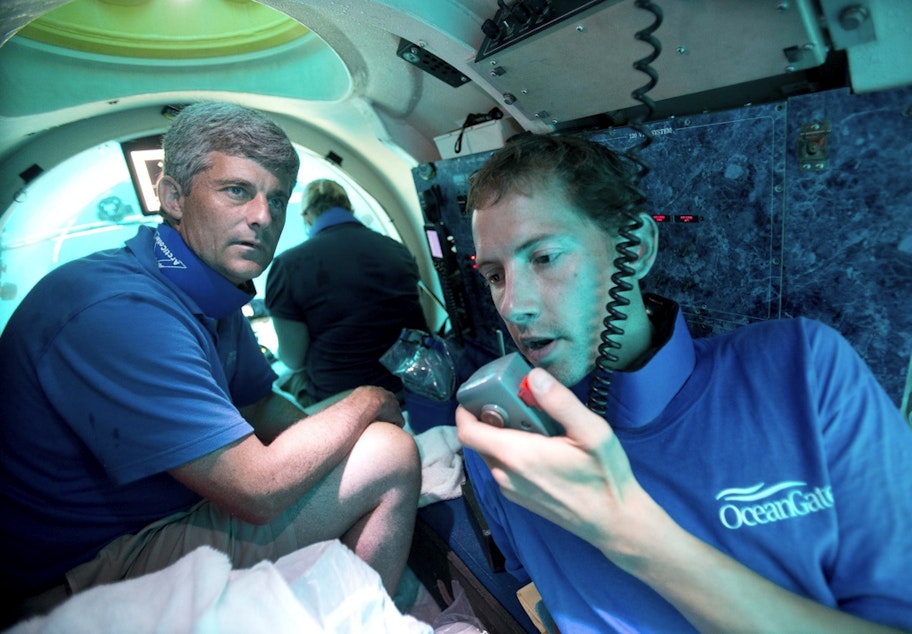UW professor describes being 'very confident' about 2018 submersible expedition with OceanGate

In 2018, researchers with the University of Washington’s Friday Harbor marine labs collaborated on multiple science projects with OceanGate, the Everett-based company behind the Titan submersible that imploded after being lost at sea, killing the five passengers on board.
A middle-depth submersible called CYCLOPS, operated by OceanGate CEO Stockton Rush who is among those dead, was used to carry out the company’s partnership with UW.
“That one works really well for the Salish Sea, where the deepest water is only 1,000 feet or 1,100 feet. And CYCLOPS can go right to the bottom of it,” said Adam Summers, a professor in UW’s biology department and School of Aquatic and Fisheries Sciences.
RELATED: OceanGate confirms 5 dead after Titan debris found at bottom of ocean
The goal of the dives was to collect data that could help answer various questions about local marine life.
Sponsored
“Everything from where did these little tiny forage fish called sand lance go in the sand, to what kind of damage does scientific trawling do, to what does the diet of some of these deep water Urchins look like?” Summers said.
He spent several months weighing the risks and preparing for the potential dangers of venturing out in the submersible with OceanGate. While not negligible, Summers explained the risk of boarding CYCLOPS was lesser than that of occupying the Titanic submersible, which was intended to view ship wreckage resting at about 13,000 feet below sea level.
“We talked about the gas tanks that we had – how long they would work for us if we did get entangled and stuck below,” Summers said. “At 1,000 feet, you can easily access it with technology that can be flown to the site relatively quickly. I mean, bear in mind, our mission took place within sight of land. So, you know, really the technological resources that could be brought to bear within 48 hours were just completely different than are available 700 miles from land in the North Atlantic.”
RELATED: The Titanic tourist sub was built by a Seattle man's Everett-based company
He described OceanGate as being “absolutely fabulous about risk management – thinking about risks, what kinds of risks were tolerable, what wasn't,” adding that he “was very confident in their abilities to deal with risk.”
Sponsored
Summers concluded that for him, the potential rewards of boarding CYCLOPS outweighed the risks.
"I was exhilarated from the moment I woke up that morning, knowing I was going to get…into the sub,” he said. “If you had asked me at the end how long I've been down, I would have said 10 minutes. And it was three and a half hours gone. I mean, just – it was the most thrilling thing.”
He said the things he got to see while aboard CYCLOPS were worth the price of admission.
“We came down through clouds of spotted ratfish, these chimaeras that are just magnificent, and you know, flapping by this giant, hemispherical window. With our lights on, we could see all this flocculent matter, so it looked like it was snowing up as we descended. And then these schools of fish would come through…we saw schools of dogfish, we saw schools of tomcod. And so as a fish biologist, I was just in heaven seeing these things in their schools — in their native environments — instead of in nets. I was just blown away to see them as they lived.”
But the expedition wasn’t without its challenges.
Sponsored
“We lost communication about 30 minutes in, long before we got to the bottom,” Summers said. “And it's a depth-related thing. We got down deep enough and we just lost communication; it didn't impair our dive at all. And we regained communication as we got closer to the surface. So the fact that they lost communication so early made me think that probably it was not an entanglement issue, which is the sort of nightmare fuel for undersea explorers.”
For its part, the missing Titan submersible lost communication with the surface less than two hours into its dive, which it never regained.





